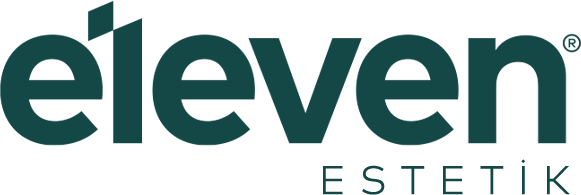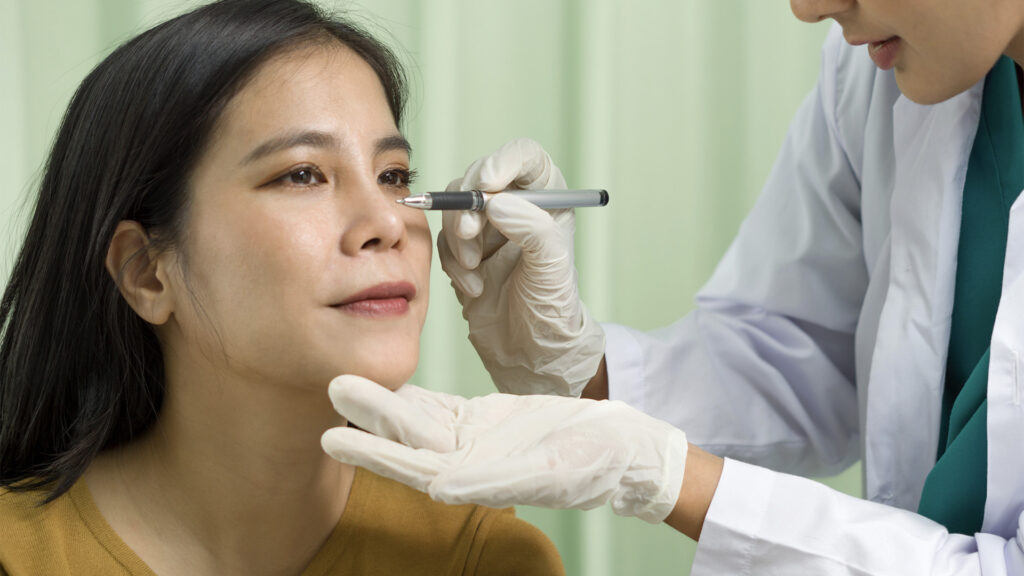Asian Rhinoplasty has become one of the most popular applications of plastic surgery today. This method allows the shape and size of the nose to be reshaped according to personal preferences and increases the self-confidence of individuals. However, Asian rhinoplasty is not only an aesthetic intervention, but also helps to achieve a harmonious appearance with one’s facial features. In this article, we will take an in-depth look at issues such as curiosities about Asian rhinoplasty, application methods and the healing process. In addition, we aim to provide comprehensive information to our readers by answering frequently asked questions about who this aesthetic operation is suitable for.
What is Asian Rhinoplasty?
Asian rhinoplasty is a surgical intervention among rhinoplasty procedures and is designed in accordance with the facial structure and aesthetic understanding of individuals of Asian origin. This type of operation is performed to change the shape, size and structure of the nose. Its aim is not only to achieve aesthetic values, but also to increase the overall appearance and self-confidence of the person.
Key Features
Asian rhinoplasty aims to create a nose that is compatible with facial features and some important points to be considered in this process are as follows:
- Facial Structure: The facial features of individuals of Asian origin usually differ. This structure should be taken into consideration in rhinoplasty operations.
- Aesthetic Norms: Individuals’ understanding of aesthetics may differ culturally. Therefore, applications should be personalized.
- Surgeon’s Experience: The expertise of the surgeon performing the procedure is a critical factor for a successful outcome.
Advanced Technologies
With the development of plastic surgery in recent years, various techniques and technologies are also used in this operation. Some methods used during the procedure:
- Closed Method: The surgeon makes incisions on the inside of the nose and intervenes in a way that is not visible from the outside. This method leaves less scarring.
- Open Method: A small incision is made at the tip of the nose, allowing better access to the entire structure of the nose. This method is suitable for more complex nasal structures.
Why Preferred?
Asian rhinoplasty plays an important role in achieving the nose shape that individuals dream of. Among the benefits provided by this method:
- Personal Satisfaction: In case individuals do not like their appearance, this procedure can increase personal satisfaction and self-confidence.
- Body Proportion A rhinoplasty compatible with the facial structure makes the body proportions more balanced.
- Breathing Problems: Operations performed for aesthetic reasons can also solve breathing problems with constructive interventions.
To summarize, Asian rhinoplasty meets aesthetic concerns by offering personalized solutions and allows individuals to feel better. In this process, careful evaluation and the experience of the surgeon are vital.

Asian Rhinoplasty Methods
Asian rhinoplasty is a type of surgical intervention in which different techniques are used. These methods vary according to the patient’s needs, nasal structure and aesthetic expectations. The most commonly used methods are explained in detail below.
Open Rhinoplasty
This method involves making an incision on the nose. The surgeon lifts the skin between the nostrils, allowing direct access to the cartilage and bone structure.
- Advantages:
- It offers a wider field of view.
- It is an effective method for correction of complex deformities.
Closed Rhinoplasty
This technique is performed with incisions made inside the nostrils. Thus, the nose is shaped without leaving any scars on the outside.
- Advantages:
- The healing process is faster.
- The likelihood of scarring after the surgical procedure is low.
Laser Rhinoplasty
The laser method allows precise shaping of the nasal tissue. This method reduces the possibility of bleeding and accelerates the healing process.
- Advantages:
- Low risk of bleeding.
- Anesthesia where less is needed.
Rhinoplasty
Rhinoplasty is a general term for improving the physical appearance of the nose. There are mainly two types:
- Aesthetic rhinoplasty: Focused on appearance.
- Functional rhinoplasty: Aimed at correcting nasal obstruction or breathing problems.
Which Method to Choose?
The choice of method depends on the surgeon’s recommendations and the patient’s specific situation. Here are some factors to consider when choosing:
| Factor | Open Rhinoplasty | Closed Rhinoplasty | Laser Rhinoplasty |
|---|---|---|---|
| Risk of scarring | High | Low | Low |
| Field of view | Wide | Dar | Dar |
| Recovery time | Middle | Fast | Very fast |
| Effective in complex situations | Yes | No. | No. |
Each method should be preferred by taking into account the patient’s condition and expectations. It is possible to achieve healthier and aesthetic results with the guidance of specialist physicians.

Who is Suitable for Asian Rhinoplasty?
Asian rhinoplasty is an important surgical method preferred by individuals to eliminate discomfort in the nasal structure and minimize their aesthetic concerns. However, people who will benefit from this procedure must meet certain criteria. Here are the details about these criteria:
Eligible Candidates
Individuals with Complete Facial Development
Rhinoplasty should be performed after puberty when facial development is completed. Generally, from the age of 18, it is a suitable period for both women and men. As facial development is not fully realized, the nose structure may also change.
People with Aesthetic or Functional Problems
People who have a visual or functional problem in the nasal structure may consider this operation in terms of respiratory problems as well as aesthetic concerns. For example
- Nose arch
- Low nose tip
- Asymmetrical nose structure
- Nasal congestion
Individuals in Good Health
In order to respond to any surgical intervention, it is critical to have appropriate health status.
- Those with chronic diseases such as diabetes and high blood pressure should first have a detailed discussion with their doctor.
- Smokers should also minimize this habit as it can affect the healing process.
Physician Recommendations
- Physician Selection: It is beneficial to be performed by a specialist who is a master of aesthetic surgery. The physician can quickly move on to a plan suitable for the patient’s facial structure and expectations.
- Consultations: A potential candidate should visit the doctor for a routine check-up and discuss the structure of the nose.
Does Appearance Matter?
People’s motivations for their aesthetic concerns differ. Therefore, taking into account personal reasons, the following situations should be taken into account:
- The discomfort felt by the person: This type of application may be important for individuals who have difficulty in their social life due to the shape of the nose.
- In search of a new look: Those who are looking for a change in their appearance and self-confidence can be considered as suitable candidates.
As a result, rhinoplasty is limited by certain criteria. Individuals’ personal health status, aesthetic expectations and examination results are the main factors that determine the appropriateness of the procedure. Making a decision in line with the recommendations of the physician with a comprehensive evaluation is very important to achieve the best result.
Recovery Process After Asian Rhinoplasty
After the rhinoplasty operation, some changes are observed in the standard of living of the patients. This process may vary depending on the physical condition of the patient and the procedure performed. However, in general, the recovery process consists of the following stages:
Early Days
- Swelling and Bruising: Swelling and bruising around the nose may occur in the first 24-48 hours. This is a natural result of the procedure and will decrease over time.
- Pain and Discomfort: Mild to moderate pain sensation is normal. Painkillers recommended by the doctor can be used.
- Use of Tapes and Splints: After surgery, the doctor will inform you to use special tapes and splints to support the nose.
First Week
- First Control Examination: You should see your doctor 5-7 days after the operation. In this process, splints and bands are usually removed.
- Healing of Stitches: Stitches inside the nose may dissolve or may need to be removed. It is important to ask your doctor for information on how to manage these stitches.
- Physical Activity Restriction: Heavy activities, sports and situations that may cause impact on the nose should be avoided for about a week.
Length of the Recovery Process
- Full Recovery In general, full recovery after rhinoplasty varies between 6 months and 1 year. During this time, the shape and sensitivity of the nose will slowly begin to settle over the year.
- Evaluation of Results: Although the results become evident in the first few months, there is a period of time to wait for the shape of the nose to fully settle. Therefore, it is necessary to be patient.
Tips to Speed Up the Recovery Process
- Rest Adequate rest is important for the body to recover.
- Applying Cold Compress: In the first days, it may be useful to apply a cold compress around the nose to reduce swelling.
- Regular Checkups: Follow your doctor appointments without interruption. Following your doctor’s instructions at every stage will speed up your recovery process.
| Recovery Phase | What needs to be done |
|---|---|
| Early Days | – Using painkillers – Maintaining the use of tapes and splints |
| First Week | – Seeing a doctor – Avoiding physical activity |
| 1-6 Months | – Performing light activities – Observing results |
| 6-12 Months | – Waiting for full results – Allowing the natural look to occur |
This process may differ for each individual. The important thing is to stick to the doctor’s recommendations and go through the process carefully.
Frequently Asked Questions About Asian Rhinoplasty
Rhinoplasty is an important life choice for many people. Some frequently asked questions, especially about Asian rhinoplasty, can help potential patients both get information and make the right decisions. Here are some frequently asked questions and answers:
| Question. | Answer |
|---|---|
| What is the best age for rhinoplasty? | Generally, the ideal age recommended for rhinoplasty is between 18 and 40 years old. However, each individual’s situation is different; a doctor’s examination is necessary. |
| How long does the surgery take? | Rhinoplasty surgery usually takes between 1.5 and 3 hours. However, this time may vary depending on the method applied and the patient’s condition. |
| How does the postoperative recovery process work? | Bruising and swelling may occur in the first few days. It is usually possible to return to normal activities within 1 week, but full recovery may take several months. |
| Will my appearance become clear immediately after the aesthetic operation? | No, it can take up to 6 months for the shape of the nose to fully settle. Swelling in the early stages can hide the effect of the result. |
| Is local anesthesia enough? | Depending on the type of surgery, both local and general anesthesia can be used. Which anesthesia method will be used is agreed between the doctor and the patient. |
| Would a repeat procedure be necessary? | If needed, a re-intervention may be necessary. However, if a good result has been achieved, a second operation may not usually be necessary. |
Extra Information
- Evaluate the Suitable Sides: The suitability of individuals for plastic surgery is evaluated by considering facial structure, skin quality and general health status.
- Doctor Selection: Choosing an experienced and competent plastic surgeon is one of the most important steps to get a successful result.
- Naturalness of Results: Thanks to modern techniques, it is possible to achieve a more natural look. Therefore, it is important to clearly share your wishes with your doctor.
This information will be a guide for individuals who are considering having Asian rhinoplasty. It is always useful to contact a specialist physician to get the most accurate and up-to-date information.

